-
AuthorSearch Results
-
December 13, 2021 at 3:38 pm #6229
In reply to: The Elusive Samuel Housley and Other Family Stories
Gretton Tailoresses of Swadlincote and the Single Journalist Boot Maker Next Door
The Purdy’s, Housley’s and Marshall’s are my mothers fathers side of the family. The Warrens, Grettons and Staleys are from my mothers mothers side.
I decided to add all the siblings to the Gretton side of the family, in search of some foundation to a couple of family anecdotes. My grandmother, Nora Marshall, whose mother was Florence Nightingale Gretton, used to mention that our Gretton side of the family were related to the Burton Upon Trent Grettons of Bass, Ratcliff and Gretton, the brewery. She also said they were related to Lord Gretton of Stableford Park in Leicestershire. When she was a child, she said parcels of nice clothes were sent to them by relatives.
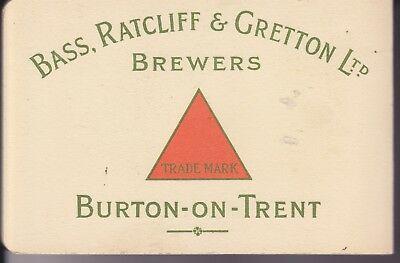
It should be noted however that Baron Gretton is a title in the Peerage of the United Kingdom, and was created in 1944 for the brewer and Conservative politician John Gretton. He was head of the brewery firm of Bass, Ratcliff & Gretton Ltd of Burton upon Trent. So they were not members of the Peerage at the time of this story.
What I found was unexpected.
My great great grandfather Richard Gretton 1833-1898, a baker in Swadlincote, didn’t have any brothers, but he did have a couple of sisters.
One of them, Frances, born 1831, never married, but had four children. She stayed in the family home, and named her children Gretton. In 1841 and 1851 she’s living with parents and siblings. In 1861 she is still living with parents and now on the census she has four children all named Gretton listed as grandchildren of her father.
In 1871, her mother having died in 1866, she’s still living with her father William Gretton, Frances is now 40, and her son William 19 and daughter Jane 15 live there.
By the time she is 50 in 1881 and her parents have died she’s head of the house with 5 children all called Gretton, including her daughter Jane Gretton aged 24.Twenty five year old Robert Staley is listed on the census transcription as living in the same household, but when viewing the census image it becomes clear that he lived next door, on his own and was a bootmaker, and on the other side, his parents Benjamin and Sarah Staley lived at the Prince of Wales pub with two other siblings.
Who was fathering all these Gretton children?
It seems that Jane did the same thing as her mother: she stayed at home and had three children, all with the name Gretton. Jane Gretton named her son, born in 1878, Michael William Staley Gretton, which would suggest that Staley was the name of the father of the child/children of Jane Gretton.
The father of Frances Gretton’s four children is not known, and there is no father on the birth registers, although they were all baptized.
I found a photo of Jane Gretton on a family tree on an ancestry site, so I contacted the tree owner hoping that she had some more information, but she said no, none of the older family members would explain when asked about it. Jane later married Tom Penn, and Jane Gretton’s children are listed on census as Tom Penn’s stepchildren.
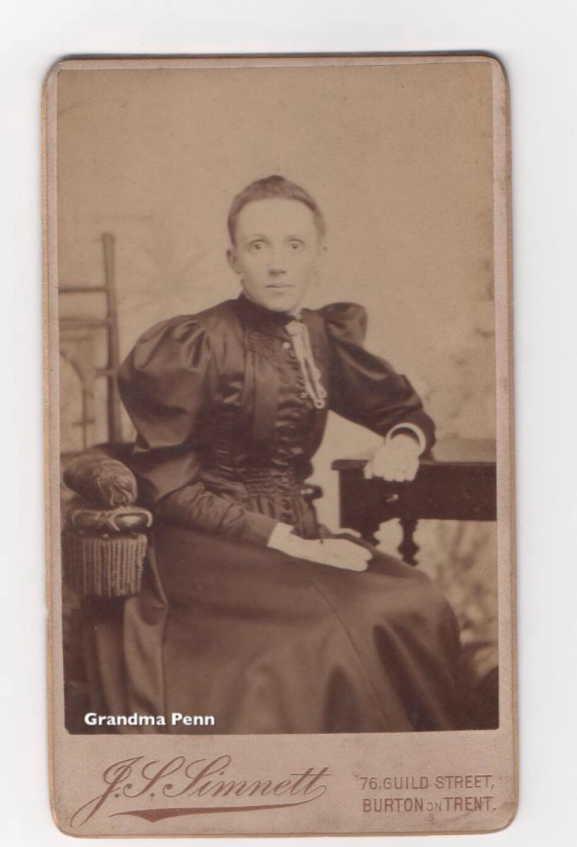
It seems that Robert Staley (who may or may not be the father of Jane’s children) never married. In 1891 Robert is 35, single, living with widowed mother Sarah in Swadlincote. Sarah is living on own means and Robert has no occupation. On the 1901 census Robert is an unmarried 45 year old journalist and author, living with his widowed mother Sarah Staley aged 79, in Swadlincote.
There are at least three Staley Warren marriages in the family, and at least one Gretton Staley marriage.
There is a possibility that the father of Frances’s children could be a Gretton, but impossible to know for sure. William Gretton was a tailor, and several of his children and grandchildren were tailoresses. The Gretton family who later bought Stableford Park lived not too far away, and appear to be well off with a dozen members of live in staff on the census. Did our Gretton’s the tailors make their clothes? Is that where the parcels of nice clothes came from?
Perhaps we’ll find a family connection to the brewery Grettons, or find the family connection was an unofficial one, or that the connection is further back.
I suppose luckily, this isn’t my direct line but an exploration of an offshoot, so the question of paternity is merely a matter of curiosity. It is a curious thing, those Gretton tailors of Church Gresley near Burton upon Trent, and there are questions remaining.
December 13, 2021 at 3:06 pm #6228In reply to: The Elusive Samuel Housley and Other Family Stories
Francis Purdy: The Beggarlea Bulldog and Primitive Methodist Preacher
Francis Purdy was my great great grandfather. We did not know anything about the Primitive Methodists prior to this family research project, but my mother had another look through the family souvenirs and photographs and found a little book dated 1913, by William Purdy called: The History of The Primitive Methodists of Langley, Heanor, Derbyshire and District. Practical remarks on Sunday school work and a biography of the late Francis Purdy, an early local preacher. Printed by GC Brittain and sons. William Purdy was Francis son, and George’s brother.
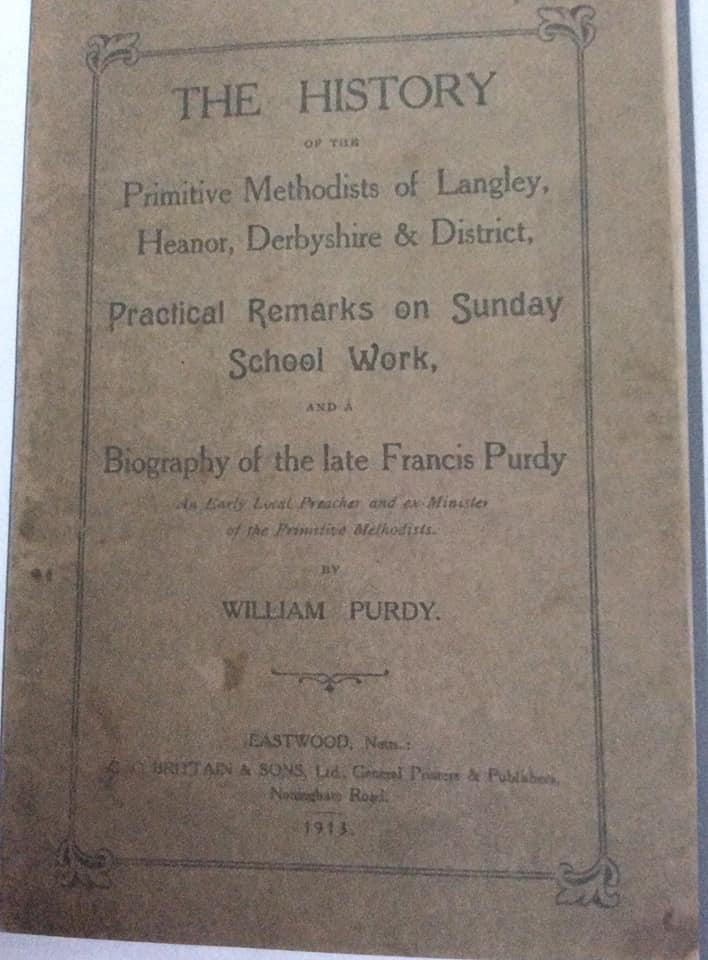
Francis Purdy:
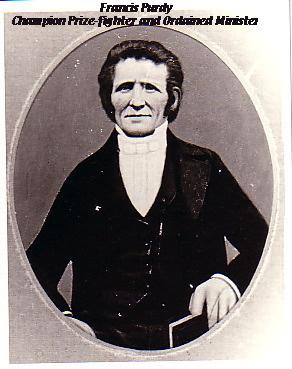
The following can be found online from various sources but I am unable to find the original source to credit with this information:
“In spite of having pious parents, Francis was a great prize-fighter and owner of champion dogs. He was known as the Beggarlee Bulldog, and fought many pitched battles. It was in 1823 that he fought on Nottingham Forest for the championship of three counties. After the fight going eleven rounds, which continued one hour and twenty minutes, he was declared victorious.”
The Primitive Methodists under the Rev Richard Whitechurch began a regular mission in Beggarlee. The locals tried to dismiss the Methodist “Ranters” by the use of intimidating tactics. Francis was prepared to release his fighting dogs during their prayer meeting, but became so interested in their faith that he instead joined them. The Methodist Church wrote: ”A strong feeling came over him, while his mates incited him to slip his dogs from the leads. He refused, and decided to return home. After concealing himself in a dyke, to listen to the Missioners on the following Sunday, he stole into the house of a Mrs Church, where a service was being held. Shortly after this, a society was formed with Francis Purdy as leader, and he was also the superintendent of the first Sunday School. After a short spell as local preacher at Beauvale, Tag Hill, Awsworth, Kimberly, Brinsley, etc., Mr Francis Purdy was ordained a minister by the Rev. Thomas King, of Nottingham, on the 17th December, 1827.”
December 13, 2021 at 2:34 pm #6227In reply to: The Elusive Samuel Housley and Other Family Stories
The Scottish Connection
My grandfather always used to say we had some Scottish blood because his “mother was a Purdy”, and that they were from the low counties of Scotland near to the English border.
My mother had a Scottish hat in among the boxes of souvenirs and old photographs. In one of her recent house moves, she finally threw it away, not knowing why we had it or where it came from, and of course has since regretted it! It probably came from one of her aunts, either Phyllis or Dorothy. Neither of them had children, and they both died in 1983. My grandfather was executor of the estate in both cases, and it’s assumed that the portraits, the many photographs, the booklet on Primitive Methodists, and the Scottish hat, all relating to his mother’s side of the family, came into his possession then. His sister Phyllis never married and was living in her parents home until she died, and is the likeliest candidate for the keeper of the family souvenirs.
Catherine Housley married George Purdy, and his father was Francis Purdy, the Primitive Methodist preacher. William Purdy was the father of Francis.
Record searches find William Purdy was born on 16 July 1767 in Carluke, Lanarkshire, near Glasgow in Scotland. He worked for James Watt, the inventor of the steam engine, and moved to Derbyshire for the purpose of installing steam driven pumps to remove the water from the collieries in the area.
Another descendant of Francis Purdy found the following in a book in a library in Eastwood:
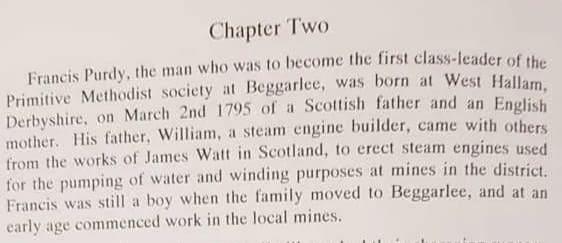
William married a local girl, Ruth Clarke, in Duffield in Derbyshire in 1786. William and Ruth had nine children, and the seventh was Francis who was born at West Hallam in 1795.
Perhaps the Scottish hat came from William Purdy, but there is another story of Scottish connections in Smalley: Bonnie Prince Charlie and the Jacobite Rebellion of 1745. Although the Purdy’s were not from Smalley, Catherine Housley was.
From an article on the Heanor and District Local History Society website:
The Jacobites in Smalley
Few people would readily associate the village of Smalley, situated about two miles west of Heanor, with Bonnie Prince Charlie and the Jacobite Rebellion of 1745 – but there is a clear link.
During the winter of 1745, Charles Edward Stuart, the “Bonnie Prince” or “The Young Pretender”, marched south from Scotland. His troops reached Derby on 4 December, and looted the town, staying for two days before they commenced a fateful retreat as the Duke of Cumberland’s army approached.
While staying in Derby, or during the retreat, some of the Jacobites are said to have visited some of the nearby villages, including Smalley.
A history of the local aspects of this escapade was written in 1933 by L. Eardley-Simpson, entitled “Derby and the ‘45,” from which the following is an extract:
“The presence of a party at Smalley is attested by several local traditions and relics. Not long ago there were people living who remember to have seen at least a dozen old pikes in a room adjoining the stables at Smalley Hall, and these were stated to have been left by a party of Highlanders who came to exchange their ponies for horses belonging to the then owner, Mrs Richardson; in 1907, one of these pikes still remained. Another resident of Smalley had a claymore which was alleged to have been found on Drumhill, Breadsall Moor, while the writer of the History of Smalley himself (Reverend C. Kerry) had a magnificent Andrew Ferrara, with a guard of finely wrought iron, engraved with two heads in Tudor helmets, of the same style, he states, as the one left at Wingfield Manor, though why the outlying bands of Army should have gone so far afield, he omits to mention. Smalley is also mentioned in another strange story as to the origin of the family of Woolley of Collingham who attained more wealth and a better position in the world than some of their relatives. The story is to the effect that when the Scots who had visited Mrs Richardson’s stables were returning to Derby, they fell in with one Woolley of Smalley, a coal carrier, and impressed him with horse and cart for the conveyance of certain heavy baggage. On the retreat, the party with Woolley was surprised by some of the Elector’s troopers (the Royal army) who pursued the Scots, leaving Woolley to shift for himself. This he did, and, his suspicion that the baggage he was carrying was part of the Prince’s treasure turning out to be correct, he retired to Collingham, and spent the rest of his life there in the enjoyment of his luckily acquired gains. Another story of a similar sort was designed to explain the rise of the well-known Derbyshire family of Cox of Brailsford, but the dates by no means agree with the family pedigree, and in any event the suggestion – for it is little more – is entirely at variance with the views as to the rights of the Royal House of Stuart which were expressed by certain members of the Cox family who were alive not many years ago.”
A letter from Charles Kerry, dated 30 July 1903, narrates another strange twist to the tale. When the Highlanders turned up in Smalley, a large crowd, mainly women, gathered. “On a command in Gaelic, the regiment stooped, and throwing their kilts over their backs revealed to the astonished ladies and all what modesty is careful to conceal. Father, who told me, said they were not any more troubled with crowds of women.”
Folklore or fact? We are unlikely to know, but the Scottish artefacts in the Smalley area certainly suggest that some of the story is based on fact.
We are unlikely to know where that Scottish hat came from, but we did find the Scottish connection. William Purdy’s mother was Grizel Gibson, and her mother was Grizel Murray, both of Lanarkshire in Scotland. The name Grizel is a Scottish form of the name Griselda, and means “grey battle maiden”. But with the exception of the name Murray, The Purdy and Gibson names are not traditionally Scottish, so there is not much of a Scottish connection after all. But the mystery of the Scottish hat remains unsolved.
June 12, 2014 at 9:33 am #3210In reply to: Rafaela’s Random Ramblings
– 346:
RICHARD: I guess I have a question about incarnations or parallel realities. Do humans experience focuses as other species, and specifically dolphins? ‘Cause I had an experience with a powerful hallucinogen at one time, that I was actually remembering of a time when we were all — or I and other people that I was with — dolphins. I mean, it sounds crazy!But then as I’ve been reading about it, I heard about this tribe in South America, where you mentioned I had a previous focus. It’s an area where there are these pink dolphins that actually are said to be able to shift their body structure. It sounds crazy, but I’ll just throw it out there anyway! They change their appearance and come out of the water basically, and then go back. The tribe that lives there protects these dolphins. If anybody goes anywhere near them trying to harm them, they will kill them, and it’s out of love, not anger.
I’m just very intrigued by this particular species of dolphins. I’m just wondering, ‘cause I really had a close … I mean, I had an experience where I thought I was breathing … I mean, I was under the water in a hot tub for five minutes! So it was just because of my belief system, maybe, that I was not needing to breathe air anymore? (Pause) I guess that’s a question! (Laughing)
ELIAS: Very well. This … you may not be discounting yourself in this in your questioning, and not holding fearfulness with myself that I shall view this as an inconsequential question, for in actuality, this is an interesting question.
Early within the onset of these sessions, I offered information to this particular species, and that species which you term to be whales in this physical dimension. I have expressed that creatures within this dimension do not hold essence, but are created by you, which IS essence, although they are consciousness. But I have also expressed previously that these two particular species of creature within this dimension have moved into an area of assuming essence.
Now; at the time framework that I was discussing this physically with individuals previously, this action had not yet occurred, but was very close, as I was expressing. Within this present now, this is accomplished, that these particular creatures are also an expression of essence, and choosing to be manifest within this dimension NOT in the physical form of your species.
Now; as to the addressment of these particular creatures in this area of South America and your myths surrounding these creatures, these are not myths, they are not stories, and they are not what you term to be imagination.
In the experimentation of manipulating consciousness to be creating of essence, these particular creatures engage the action altering form, allowing the connection of the physical manifestation of essence within this dimension to be holding an accurate understanding and empathic sense of your species and to be creating of a connection physically, a knowing, but also recognizing that the choice is not to be manifest as essence in the form of your species, but to be manifest in this other species.
Now; within this present now, all of the species of this particular creature — dolphins, and also your whales — are manifestations of essence, unlike all of your other creations of creatures within this dimension.
This opens the window for much misunderstanding. Therefore, I shall clarify, for this is not to say that your creatures are lesser than you. They are different, for they are a creation of you. They are not essence. They are your creations, but they also are, in a manner of speaking, a part of you, just as your finger is not your entire body, but it is an element of you. Your dogs or your elephants are an extension of you. They are a creation of yours. Your dolphins and your whales are not. They are their own expression. They are their own essences.
RICHARD: And now, they’re creating their own realities.
ELIAS: Correct.
RICHARD: So then that has come about recently and will be a notable, dramatic change.
ELIAS: Correct.
In this, you have allowed yourself a similar experience in allowing yourself to empathically experience these other manifestations of essence, allowing yourself the experience of the dolphin in like manner to those particular dolphins which have offered themselves the experience of your species.
RICHARD: But when they did that, that experience, that was before they were essence. Wouldn’t that be a creation of our consciousness at that time, that caused them to take on a human form?
ELIAS: No! This has been their choice as consciousness, moving in the direction of creating essence for themselves within consciousness.
In that, they have created their experimentation with form within this dimension. This was an element of their choice, to experiment in their exploration of whether they shall participate within this dimension in similar form to you, or continue to manifest within the form they have chosen but incorporating essence. Therefore, there has been a time framework of experimentation of shifting shape.
Now; within this present now, this continues, but not for the same reason. This continues occasionally as a playful act, for they hold the knowing — unlike yourselves — objectively that they hold the ability to shift shape.
You also hold the ability to be creating this, but you do not offer yourselves the objective knowing of this. Therefore, you do not manifest this.
RICHARD: How? How do we do it?
ELIAS: Ha ha! (Grinning, and laughter)
January 19, 2013 at 7:47 am #2983In reply to: The Surge Team’s Coils
Aqua Luna’s duster was stuck in Cornella’s keyboard. She was still struggling to free it without paying too much attention to the screen. The red symbols blinking on the maps would have confused her, she would not have understood their meaning or the significance of the buttons she inadvertently pushed in her struggle. She has grown in the countryside, at a time where there was no internet available. She barely used her Oopia telepooh her daughter offered her a few years ago. The truth was she didn’t know how to take the call, even after her son in-law, showed her. Richard, that was his name. “He got the face’s name” she thought imagining the rag was a hair in his nose.
“I got it!” she exulted, pushing unknowingly the key combination to lock the session again. She returned the keyboard to its former position just as Cornella arrived.
“Oh! Thank you Aqua, you’re such a sweetie.”
The cleaning lady who didn’t really understood English put on her talk-to-my-hand smile. And left the room. She would clean the other desks later, she needed a break.Cornella’s voice stormed out.
“What the heck! There has been a breach in the artifact chamber!”
But Aqua Luna wasn’t paying attention, it was like French to her. She was rather wishing she could taking one of those red limo to go back to her place. The Chicks always used them to go everywhere, but Aqua had to take the public transportation system. That wasn’t fair.She sneaked into the garage, not aware of the camera system or the alarm system. Tony, one of the chauffeurs was there.
September 13, 2007 at 4:01 pm #133In reply to: Circle of Eights, Stories
where… the sound…
of my tears hits the ground
Just like the rain
Just like the rain…Just like the rain (Richard Hawley)
Dory has felt like the singer lately, “walking a world of empty streets”, but this had been a fruitful time to gather much information on herself; and now, there was something new she felt was coming her way. Or perhaps it was the other way around, she was coming to it, but in fact, it couldn’t matter less.
It had been, now she thought of it, it had been like a settling down of winter, so that the magic snow could appear, and be laid upon the barren lands, to provide a renewed enjoyment and vista on the landscape.
And the drops of the rain created a playful symphony of waves on the surface of the pond she was looking at through the window, and she rejoiced with the goldfishes of what was to come now.
-
AuthorSearch Results